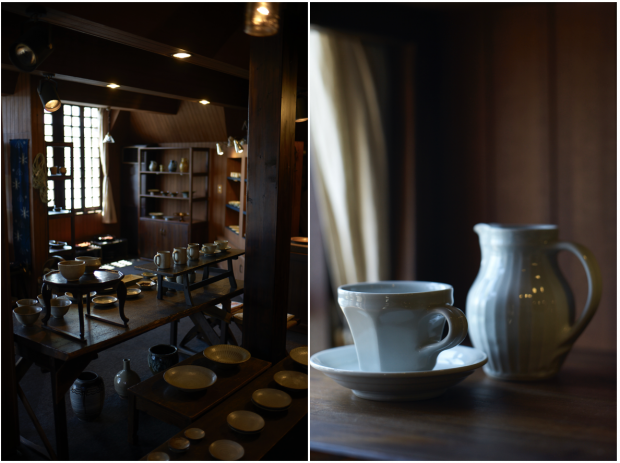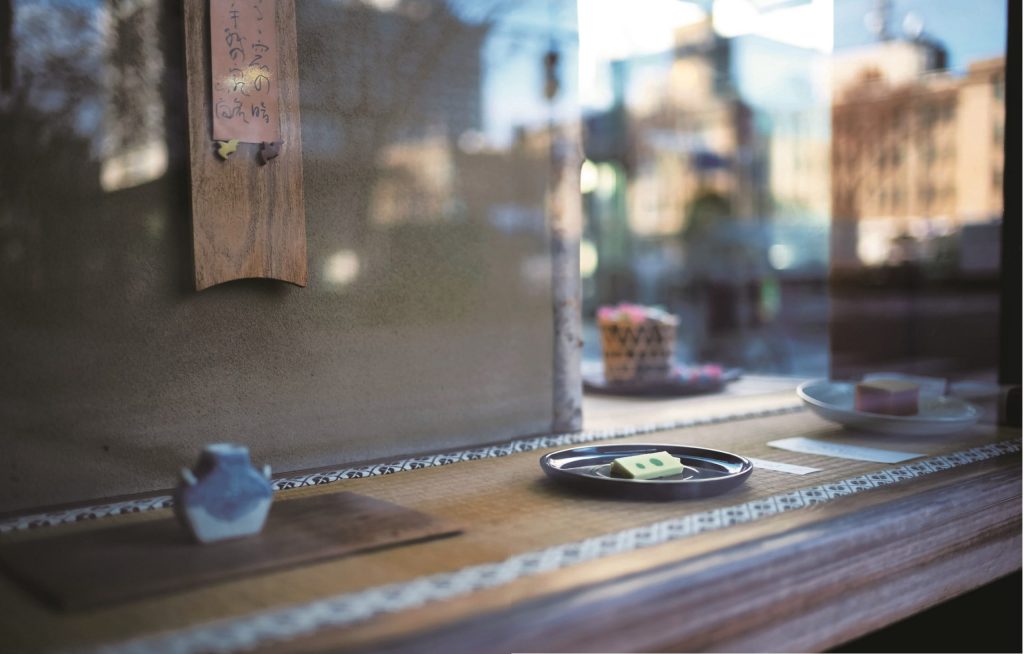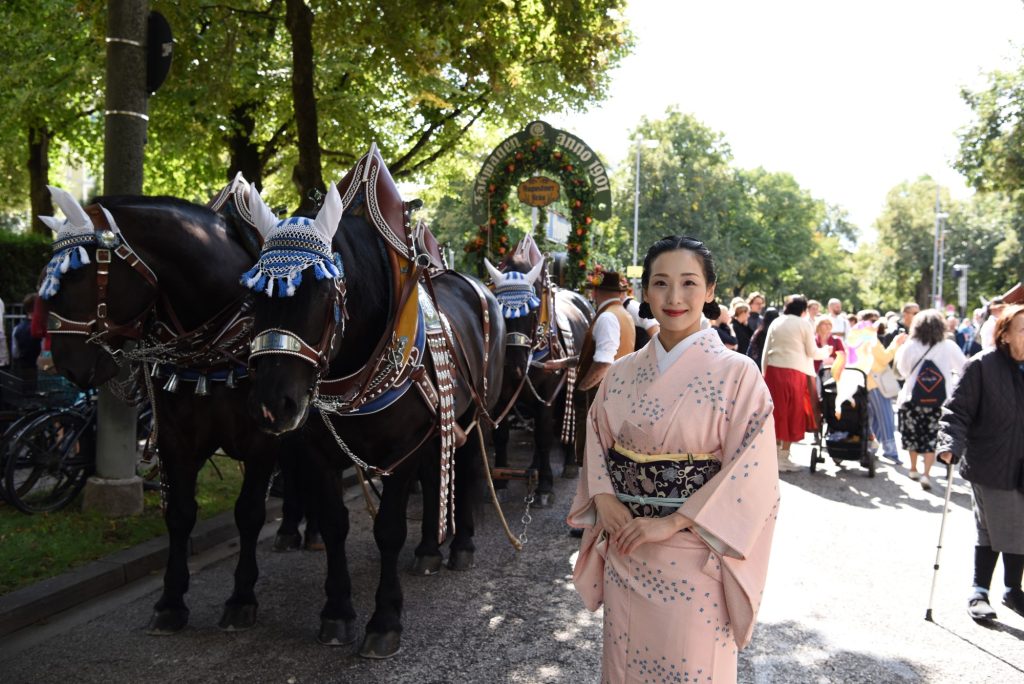In Fukushima Prefecture, on the banks of Lake Inawashiro (猪苗代湖), there is a classic Western-style house. Its name is Tenkyo-kaku (天鏡閣).
It is a national important cultural asset, and its Renaissance-style Western-style architecture is a wonderful place to see even today. It was originally the villa of His Imperial Highness Prince Arisugawanomiya Takehito (有栖川宮威仁), a member of the Imperial Family. Once you step inside, you will see a sublime interior decorated in the Art Nouveau and Rococo styles, and you will feel as if you have wandered into a romantic fairytale.
It is also famous for being the location for many film productions, such as ‘The Promised Neverland (約束のネバーランド)’ and ‘motokare no yuigonjo (元彼の遺言状)’.
History of the Tenkyo-kaku
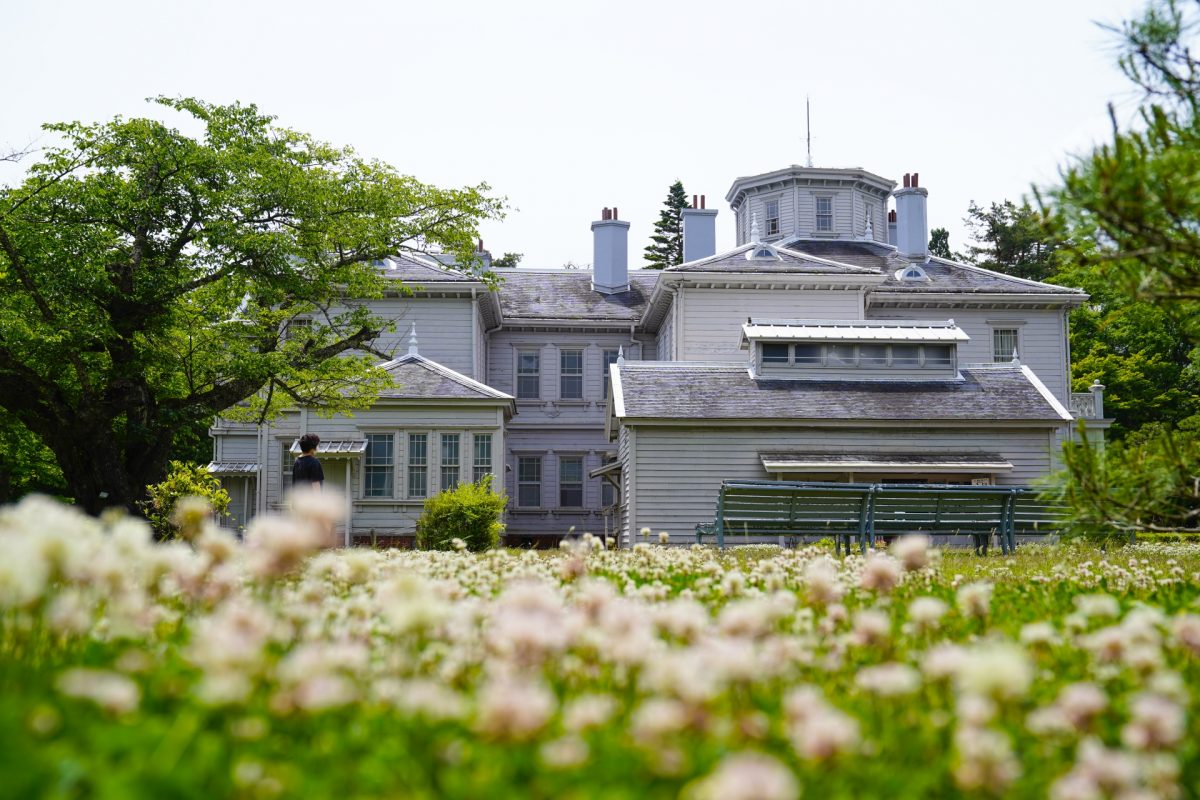
In the Meiji era, His Imperial Highness Prince Arisugawanomiya Takehito made a trip to the Tohoku region. He liked the view of Lake Inawashiro and set up his villa there in 1908. Passing through the brick front gate and up a gentle slope, you will see the two-storey, octagonal tower house, Tenkyo-kaku. The main building, with a natural slate roof and a second-floor balcony, has a calm but very glamorous atmosphere.
The annex, which has a spacious garden and is said to have housed resident servants, was built after the main building.
The annex was given to Fukushima Prefecture by Prince Takamatsunomiya Nobuhito (高松宮宜仁) in 1952 and was designated a National Important Cultural Property in 1979. Since then, the building has maintained its appearance to this day, conveying the beauty of Meiji architecture.
Gorgeous and luxurious! Enjoy the beauty of Meiji-era Western-style buildings
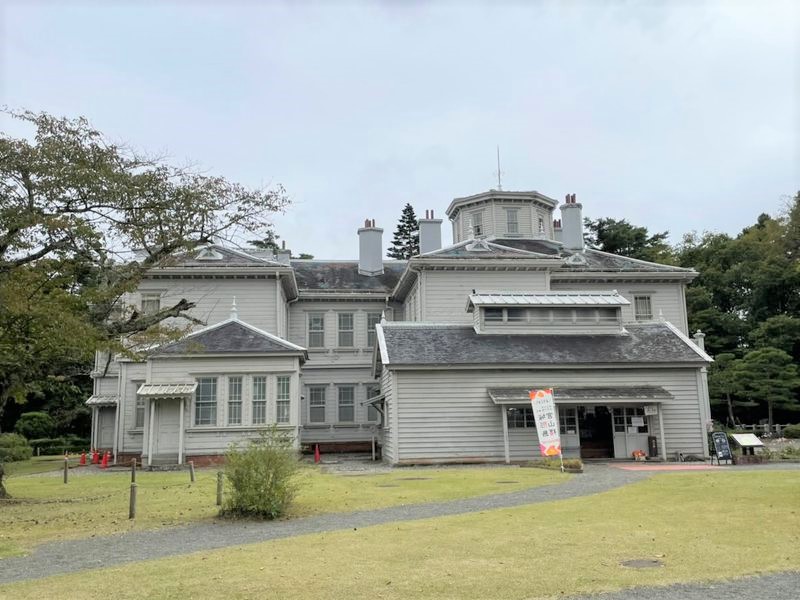
The current entrance, where the entrance reception is located, was once a kitchen

The entrance hall of the period is called the ‘Soto-hiroma (外広間; outer hall)’ and is decorated with Art Nouveau-style mirrors and hat hangers; on the ground floor are the dining room, drawing room, ballroom and other rooms for entertaining guests. The second floor is a collection of private spaces, such as the ‘living room’ (guest room), the ‘bedroom’, the study ‘throne room’ and bathroom.
Like a drama? The majestic dining room
The corridor leads to the dining room. This is a very important place for hospitality. The atmosphere is glamorous, yet somewhat solemn. The furniture here is in the British ‘Jacobean’ style. Not all of the furniture in Tenkyo-kaku is from that period. The furniture is based on existing furniture and reproduces the appearance of the period.
Guest room with furniture in rococo style arranged in Japanese style
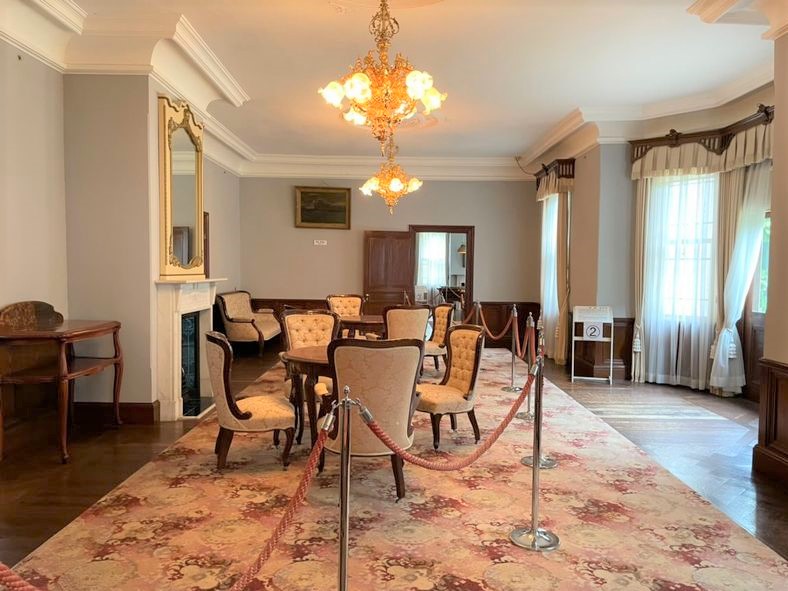
Like the dining room, the drawing room is the focal point of the Tenkyo-kaku, with its ornate chandelier, fireplace and mirrors. The furniture is all in the Rococo style to match the chandeliers. Moreover, everything has been arranged in a Japanese style, and if you look closely you can see raden (螺鈿) and maki-e (蒔絵), which were popular in aristocratic residences around the 10th to 20th century.
The chairs are said to be the same shape as those actually used in the Rokumeikan (鹿鳴館). It looks like the famous Rokumeikan building in Tokyo ! It seems that I was right to be excited…….
The doukyuu room is place for…?
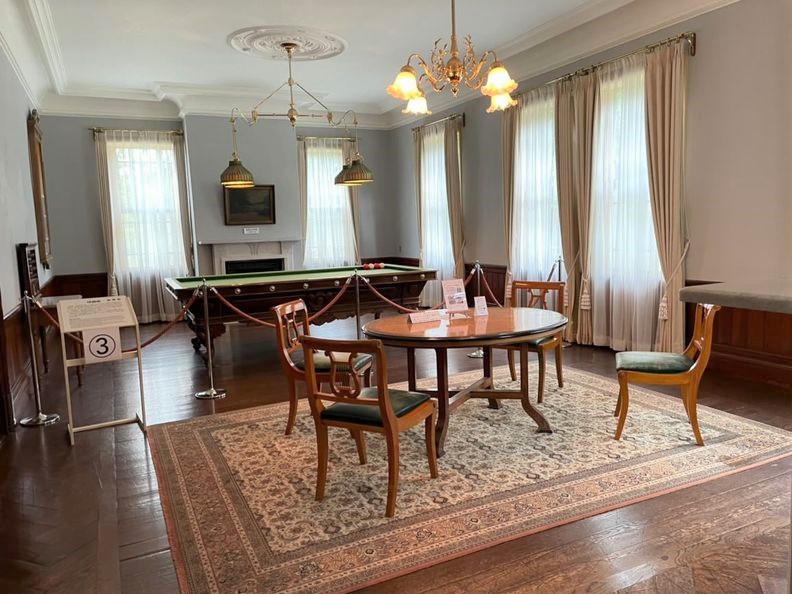
Cueball, meaning billiards. Western-style buildings of the Meiji era often had a billiard table. The doukyuu table, in other words the billiard is at the back.

The four lights above serve to illuminate evenly to avoid shadows. This billiard table was acquired from the Hara Sankei (原三渓) family in Yokohama (横浜)! It is a luxurious beauty, with a rosewood ivory interior.
The table and chairs in the foreground are for resting areas. The table has been repaired from those days.
Sophisticated elegance of the living room
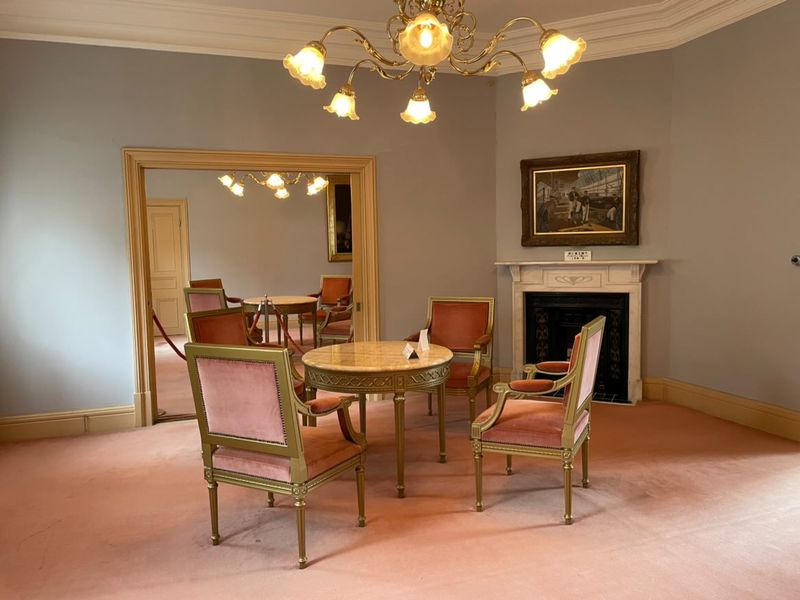
When you go upstairs, you will find a living room that doubles as a guest room. In the past, the balcony overlooked Lake Inawashiro.
This room is furnished in the style popular during the reign of Louis XVI. Some may recognise the style favoured by Marie-Antoinette.
Rooms also have washrooms and toilets!
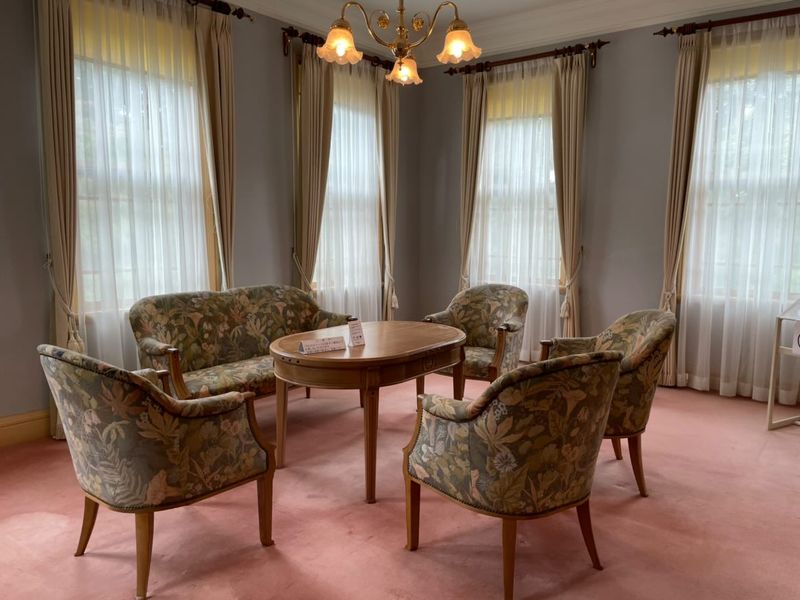
The west guest room, in Art Nouveau style, is integrated with the washroom and toilet, showing that it was designed to make guests feel at home.

The attached room has a Rococo-style dressing table, which was given to her by Her Imperial Highness Princess Takamatsunomiya (高松宮). The furniture is also in the Rococo style, giving the room the appearance of a princess’s room. (It is said that this room was actually used for changing clothes and makeup.)
The throne room or bedroom …… where His Imperial Highness lived
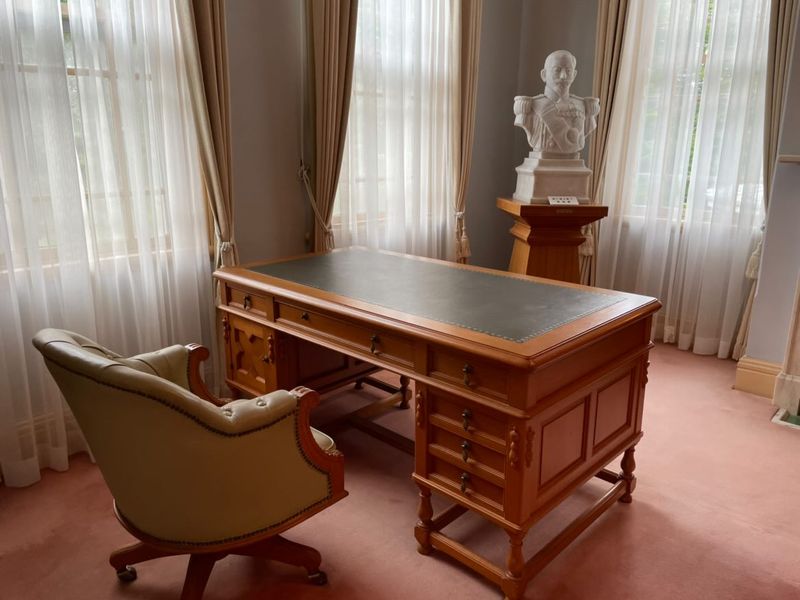
Part of the eastern part of the second floor is dedicated to His Imperial Highness the Prince of Takehito. The room was used as a study, and gives a sense of the ‘life of His Imperial Highness’, which would have been more deeply veiled in those days than it is now.
Valuable objects are also a highlight
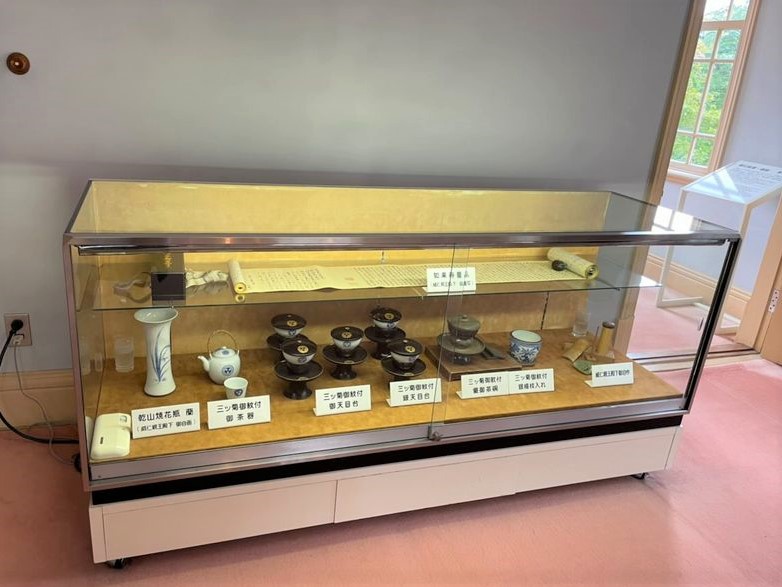
A number of valuable objects related to His Imperial Highness Prince Arisugawanomiya Takehito are on display in various parts of Tenkyo-kaku.
You can also enjoy beautiful and exquisite Meiji-era art, such as a plaque with the Emperor Taisho (大正)’s inscription “Tenkyo-kaku” and tea utensils.
Incidentally, each room on the second floor is actually covered with tatami mats. Carpets are laid on top of them. This was often used in places such as imperial residences and detached palaces.
Dress fitting and teatime in the canteen …… lots to enjoy!

Just looking at the beautiful interior is enjoyable enough, but what’s more, you can also try on dresses and have a look around. There is also a children’s section! (Women only)
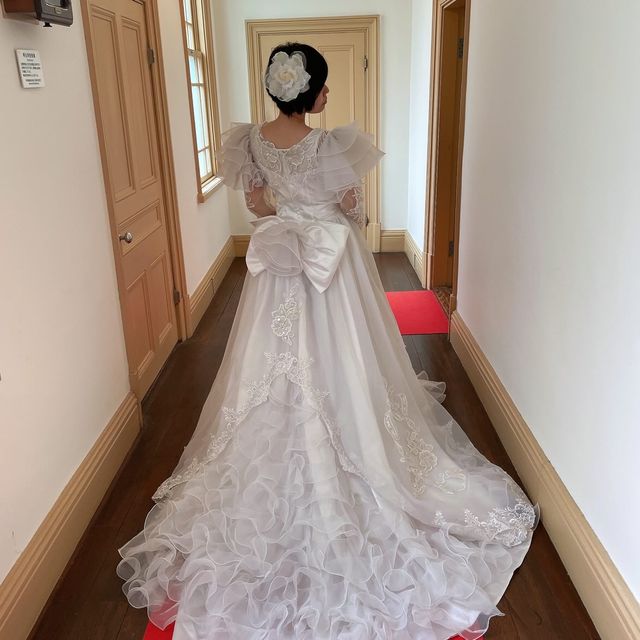
The one I borrowed this time was gorgeous, like a wedding dress. I was thrilled to go around.

In addition to Meiji-style dresses, there are dresses made of Aizu (会津) cotton, a specialty of Aizu since the Edo period, which can also be tried on!
You can also have a tea set in the cafeteria just inside. You can also enjoy refreshments in the beautiful garden.
Tenkyo-kaku offers a wide range of enjoyment. The Great East Japan Earthquake caused a lot of damage. However, in the midst of reconstruction, it has been carefully repaired and is again showing its beautiful appearance on the shores of Lake Inawashiro. You can see some of the repairs in the annex.
Please visit the annex and see for yourself!
This article is translated from https://intojapanwaraku.com/rock/travel-rock/211431/









